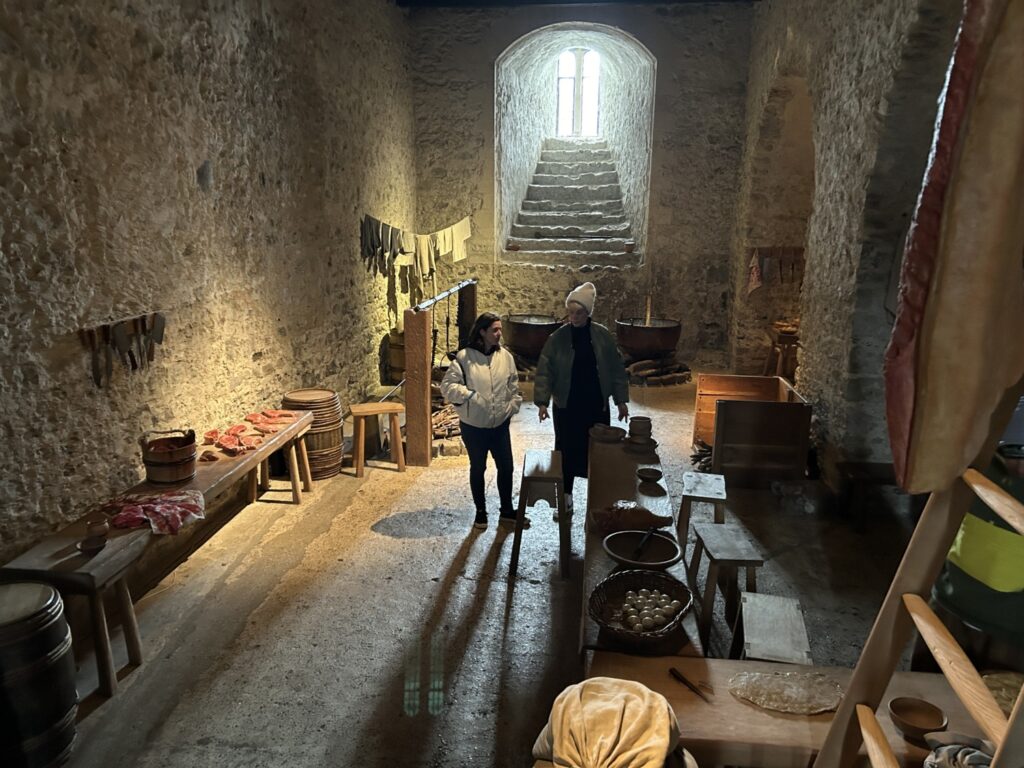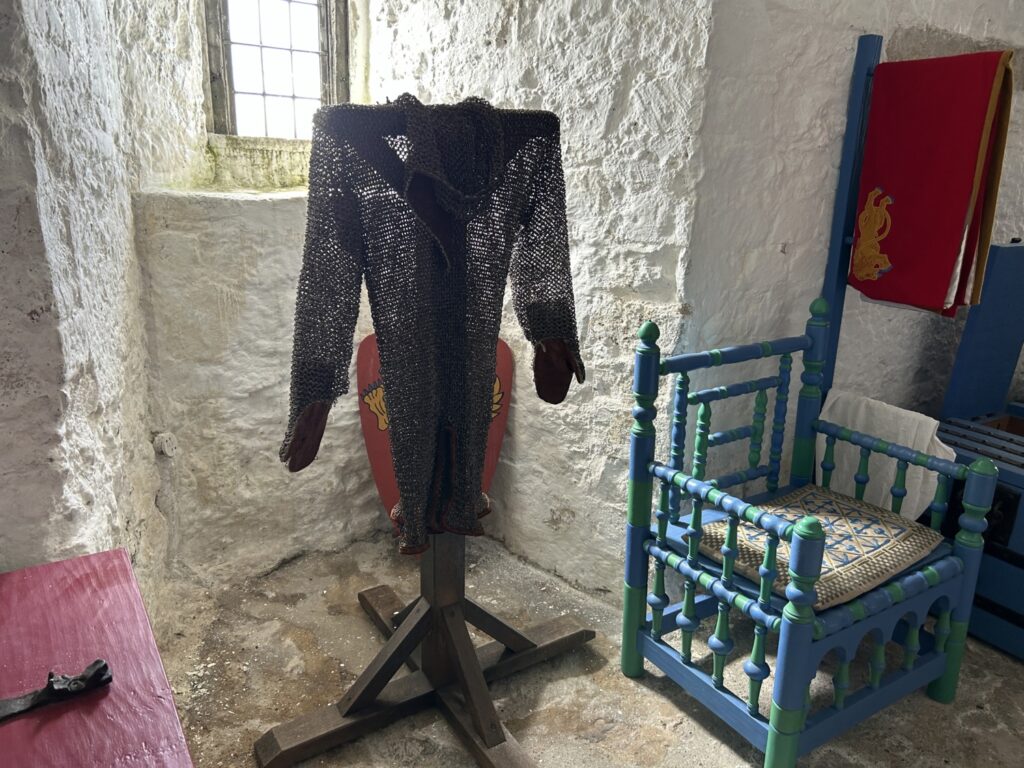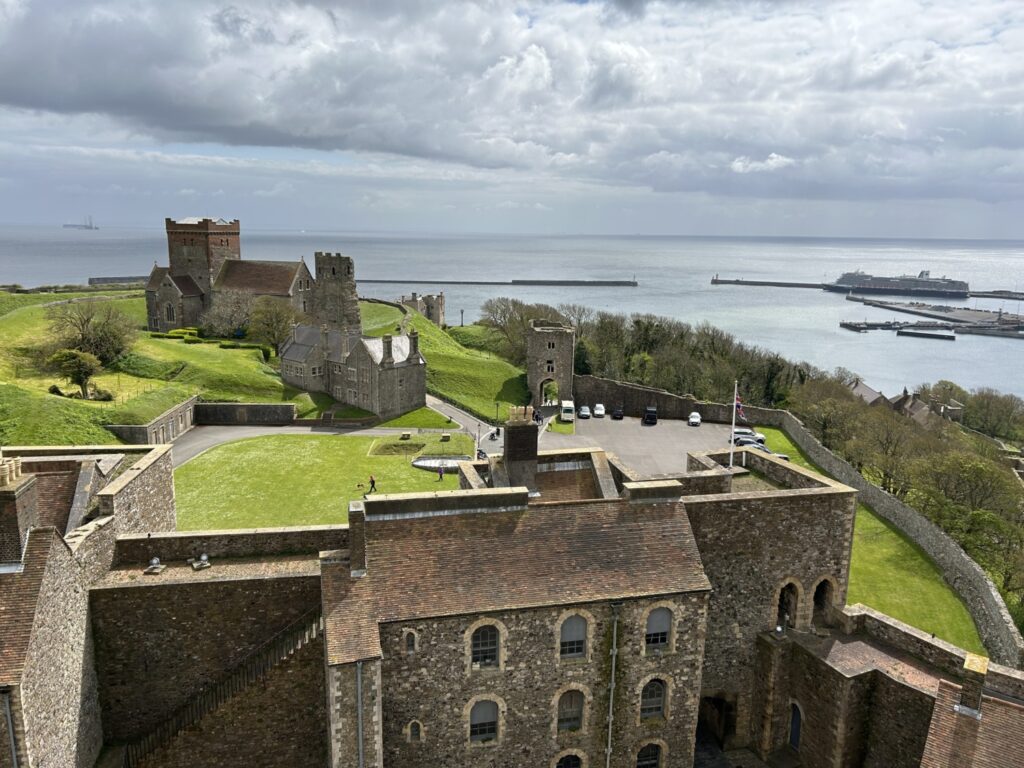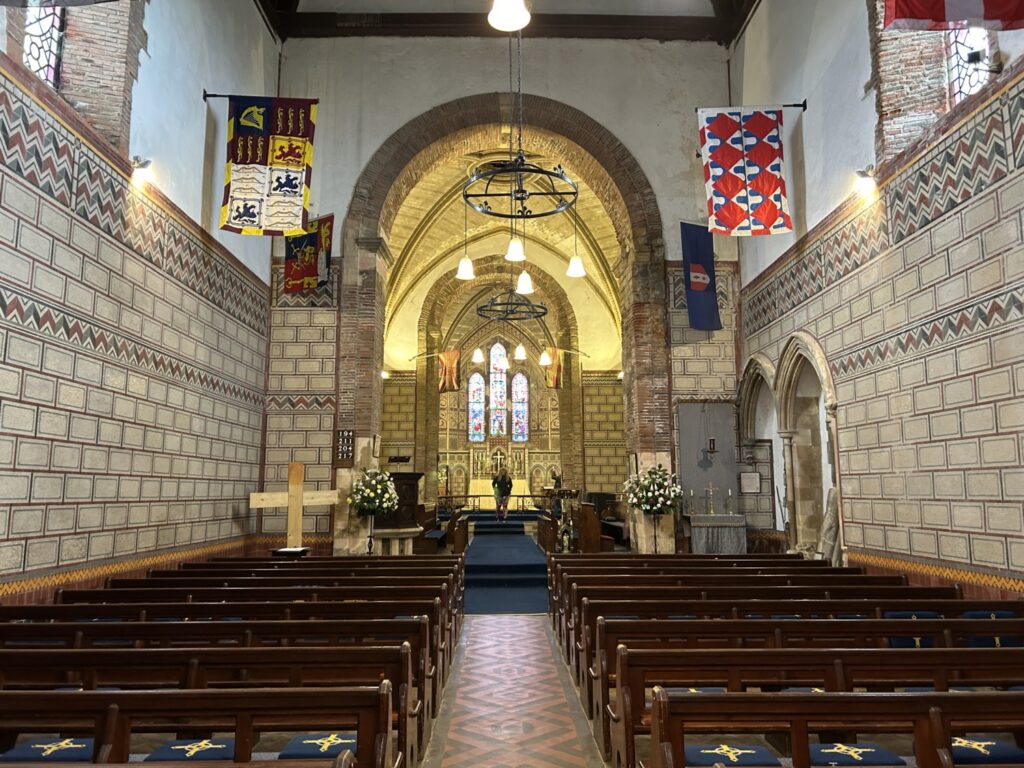In keeping with seeing one great thing every day we are in port, Tom and I visited Dover Castle. We could see the castle as we sailed into Dover and the castle and hill dominated the city. Although we considered walking there from the ship, we decided to take the shuttle once we realized how far away it was. We are always impressed by bus drivers. They whiz along narrow streets without any concern at all. The thrill is part of the travel experience.

Dover Castle is the #1 thing to see in Dover. There has been a fortified dwelling on this hill in Dover since before the Roman invasion. Henry II built most of the current castle in the 1180’s, but it changed many times in the centuries since then. It is rated a Grade I building by the English Heritage, which means that it was built before 1700 and is well-preserved. Other examples of Grade I buildings are Warwick Castle, the Palace of Westminster, and the Tower of London.
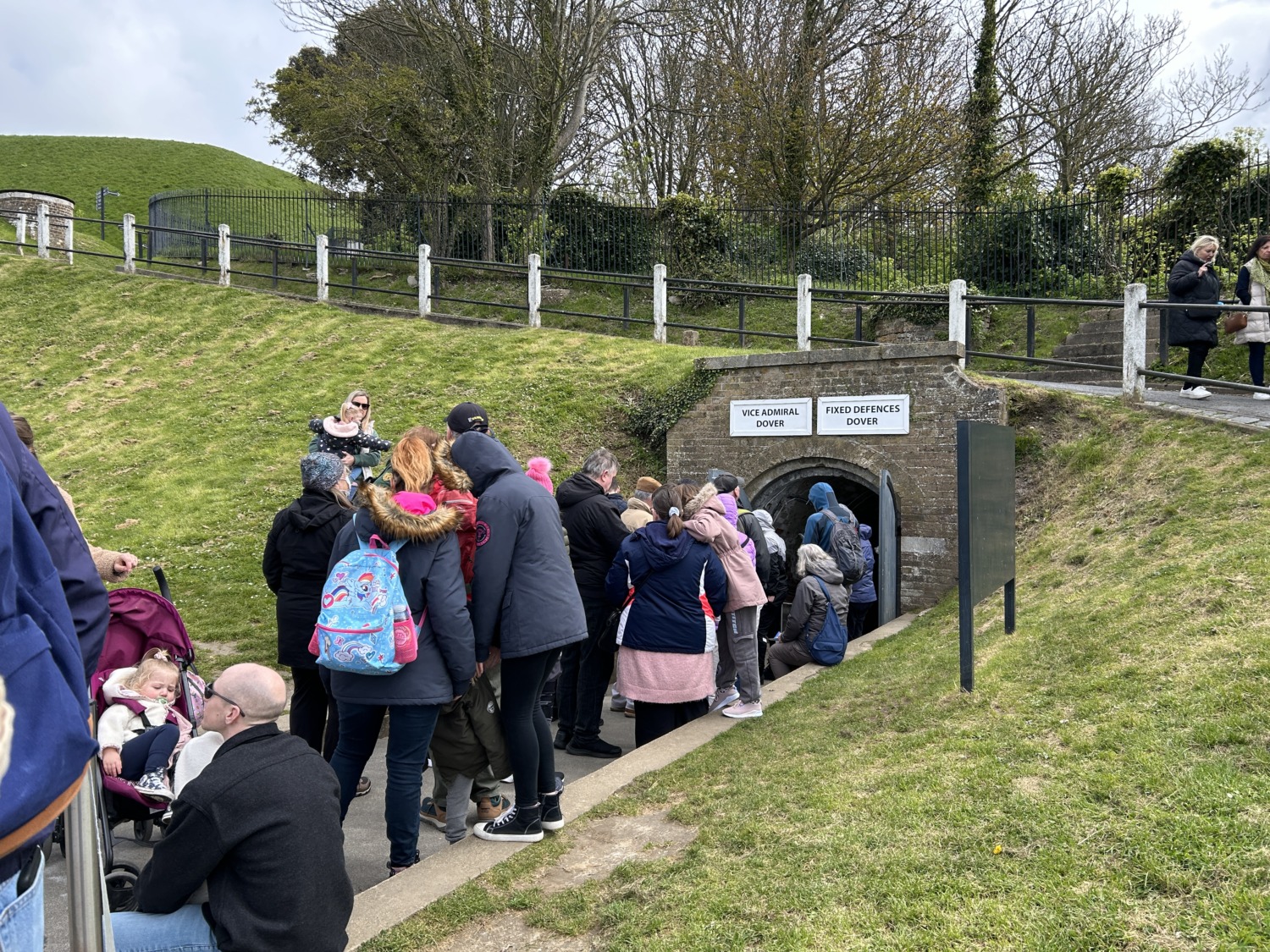
Once we reached Dover Castle, we headed first to the Operation Dynamo Tour. We are big Rick Steves fans, and his book said to get in line there first because the lines got long later in the day. The tour goes through the tunnels where they ran Operation Dynamo to evacuate the British Army and other Allied forces from Dunkirk in 1940. They take 30 people at a time on the tour, so we had to wait about an hour for our tour. Obviously other people read the Rick Steves books as well. Later in the day we walked by the same line and there was only one group waiting to get in.
The tour was very interesting and everything has been left as it was at the end of the war. They did a very good job of telling how they organized the evacuation. Originally hoping to get 45,000 troops off the beaches, they ended up evacuating 338,000 British, French, and Belgium soldiers. The Germans halted their offensive at the canal and allowed the ships to dock and take away the soldiers. For some reason, they only used the Luftwaffe to attack the soldiers. Ships from all the Allied nations helped to shuttle the soldiers to Dover. Most impressive was all the small fishing boats and personal yachts manned by civilians from England who came to get the soliders off the beaches.

After finished our tour at Operation Dynamo, Tom and I headed up the hill. We saw the New Barracks (built in the 1700’s). Then we continued climbing up through various gates, past walls, until we reached the Roman Pharos (lighthouse), built before the time of Julius Caesar, and the Church of St. Mary-in-Castro. I was pretty excited to touch the lighthouse – Julius Caesar may have touched it when he landed at Dover. The church was built by the Romans or Saxons, but it has been in use as a church since before 900. The tiling inside definitely looked Roman.

After enjoying these two ancient buildings, we continued up the hill to Henry II‘s Great Tower. Guides checked our tickets and explained that we moved around the tower in a one way direction. It kept the crowding down and made it safer on the steps. We saw the King’s chamber and dressing rooms, which a tunic of chain mail waiting for Henry. Guides were available in the most of the rooms to keep an eye on things and to answer questions.

In King Henry’s throne room, we encountered a group of Cub Scouts. They were wearing their neckerchiefs and taking turns sitting on Henry’s throne. All of the furnishings in the tower are reproductions but painted in authentic colors and made in the appropriate style. Nothing was straight or level in the tower. You don’t want enemies to be able to rush right in to the King’s chamber.
We climbed up and up until we were on the ramparts of the tower. The view was fantastic. On a clear day we could easily have seen France. As it was, we could see for miles across the countryside and across the English Channel. I’m sure Henry felt very kingly when he stood on the ramparts. We headed back down another set of stairs and saw the VIP guest rooms, the dining hall, the kitchen and laundry, and the workshops. Tom was very excited to find some big barrels and bins.
When we finished up in the Great Tower, we checked out the gift shop. It had a lot of interesting things, but also had a lot of people so we didn’t stay long. Tom had asked one of the guides about the cannons around the grounds. There were a lot of different cannon from different periods of English history. The guide told him that the most interesting cannon was back at the NAAFI restaurant. Because we had some extra time and energy, we decided to check it out.
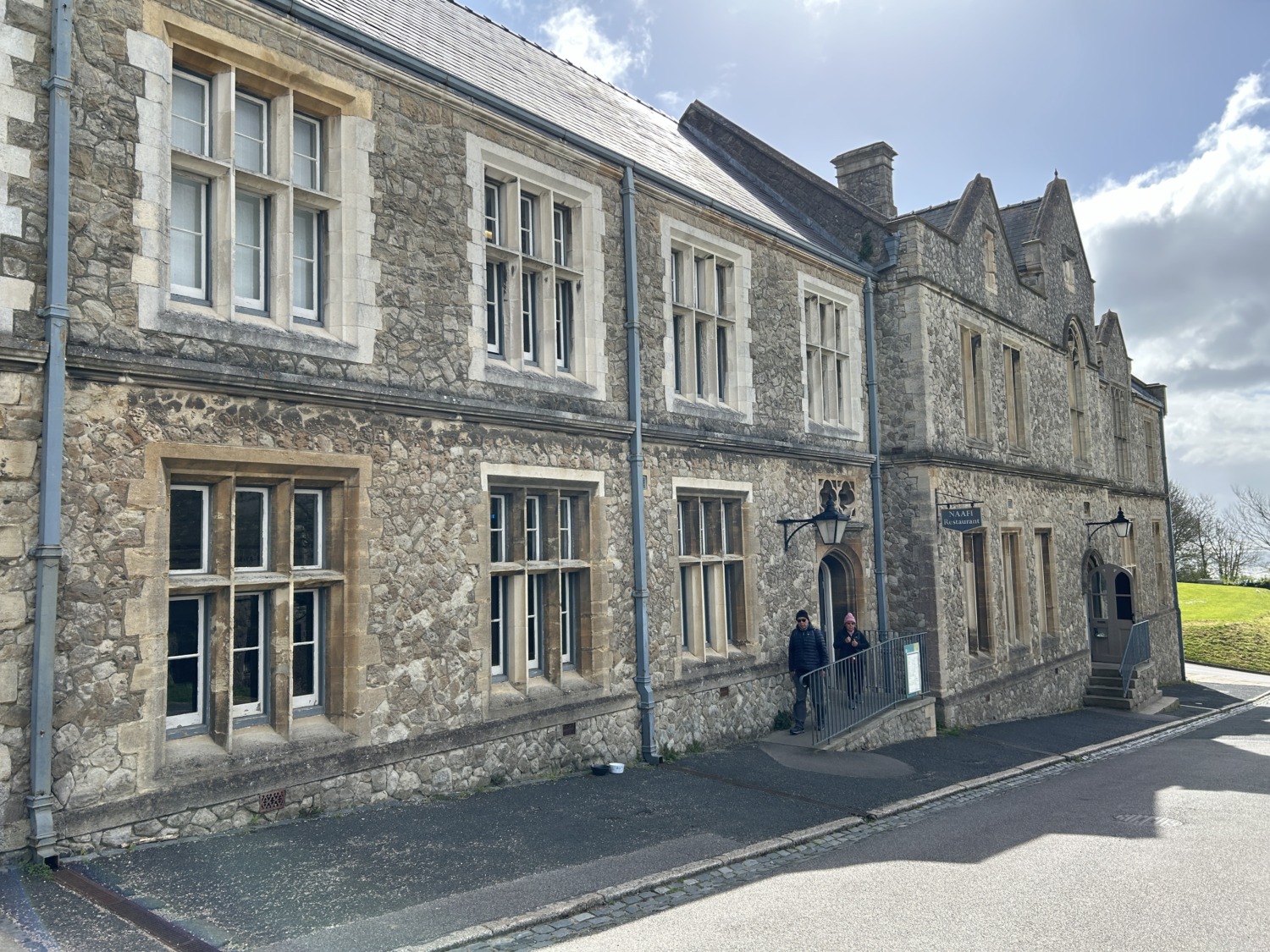
We hiked back down the hill. The NAAFI restaurant was close to where we started for Operation Dynamo. Inside the restaurant was the longest cannon I have ever seen. Queen Elizabeth’s Pocket Pistol was built in 1544 in Utrecht by Jan Tolhuys. The gun was presented to Henry VIII as a gift for his young daughter Elizabeth. The cannon is 24 feet long and decorated with engravings symbolizing liberty, victory, and fame. Best baby gift ever!

After admiring this beautiful cannon, Tom and I hiked back up the hill, out the gate, and down the hill to catch our bus back to the ship. We were very glad we had set aside the day for Dover Castle and would have gladly walked thorugh the Great Tower several more times. It met all our expectations of what a medieval castle should be.


